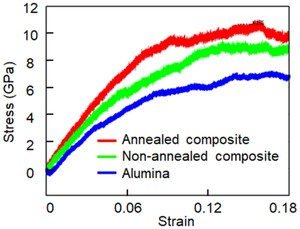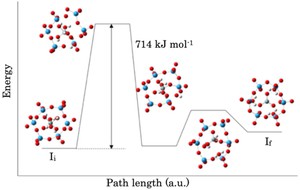[Published online Journal of Computer Chemistry, Japan Vol.18, 259-262, by J-STAGE]
<Title:> A Molecular Dynamics Study on Alumina/Carbon Nanotube Composite: How Does Annealing Affect Mechanical Properties?
<Author(s):> Yixin SU, Jing ZHANG, Qian CHEN, Yang WANG, Narumasa MIYAZAKI, Yusuke OOTANI, Nobuki OZAWA, Momoji KUBO
<Corresponding author E-Mill:> momoji(at)imr.tohoku.ac.jp
<Abstract:> Carbon nanotube (CNT) is conventionally expected to reinforce ceramic matrix like alumina. Previous experiments show that processing conditions such as annealing have positive effect on mechanical properties of the alumina/CNT composite. However, the reinforcing mechanism by annealing is not fully understood yet. For further improving the performance of alumina/CNT composite, this study aims to understand the reinforcing mechanism by annealing from the atomic scale with reactive molecular dynamics simulations. We conduct tensile simulations on pure alumina, non-annealed and annealed alumina/CNT composites, and then analyze the mechanical properties of the three models. Consequently, we find out that annealing enhances the interfacial interactions between alumina and CNT and reduces the interfacial slippage, so that the annealed CNT is more stretched than the non-annealed CNT, finally resulting in an improvement of the mechanical performance of composite.
<Keywords:> Carbon nanotubes, Ceramic matrix composites, Elastic properties, Reactive molecular dynamics simulations
<URL:> https://www.jstage.jst.go.jp/article/jccj/18/5/18_2020-0001/_article/-char/ja/


